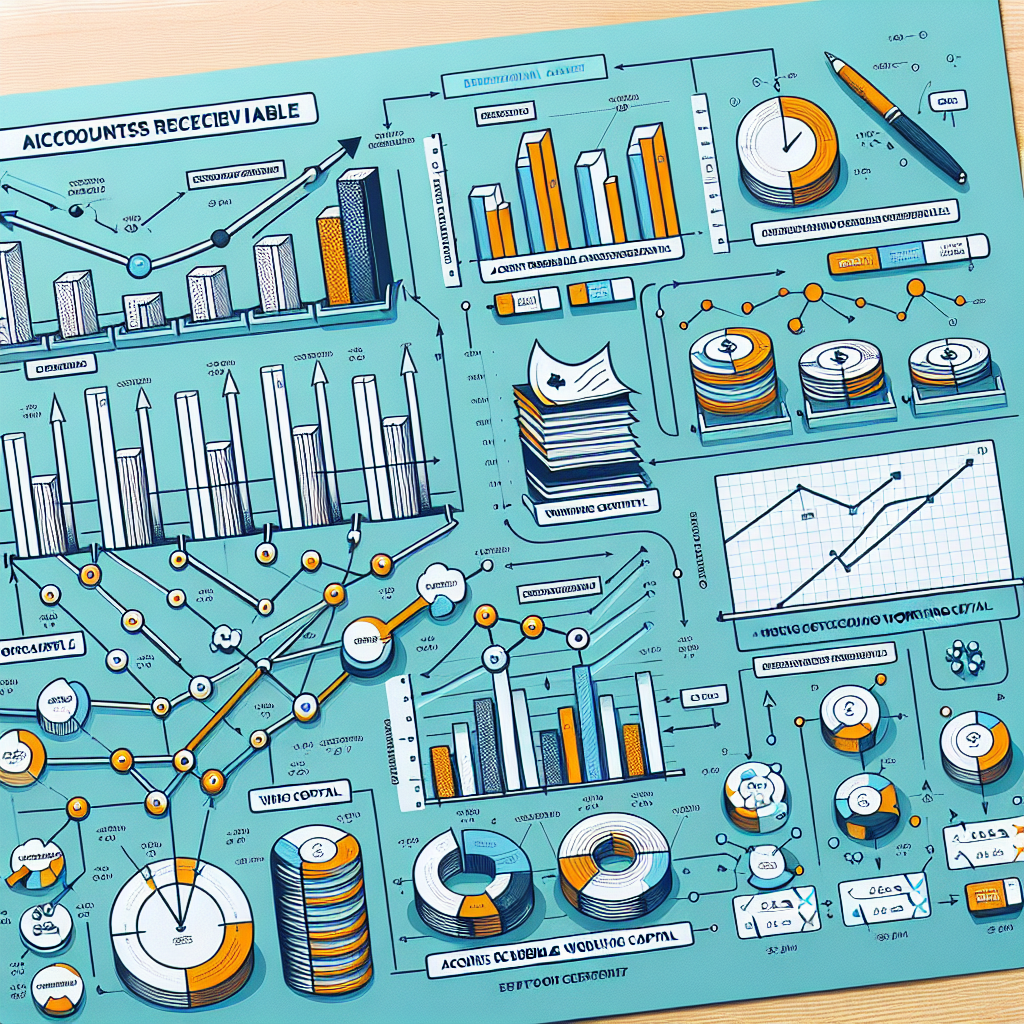Hey there, fellow detailers! I’m excited to dive into a topic that’s super crucial for anyone running a detailing business: the relationship between accounts receivable and working capital. If you’ve ever found yourself wondering how these two concepts interlink and affect your business operations, you’re in the right place. Let’s break it down into five key areas that really showcase their relationship. Ready? Let’s go!
Understanding Working Capital
What is Working Capital?
To kick things off, let’s clarify what working capital actually is. In simple terms, working capital is the money a business needs to cover its short-term obligations. Think of it as the lifeblood of your operations. It’s not just about the cash in hand; it includes accounts receivable, accounts payable, and inventory. Having enough working capital allows you to keep your business running smoothly, even when times get a little rough.
From my own experience, I’ve learned that a good grasp of your working capital can mean the difference between thriving and merely surviving. If your calculations are off, you could find yourself short when it comes to paying suppliers or handling unexpected expenses. So, get those numbers checked regularly!
Understanding the nuances of working capital helps in making informed decisions regarding cash flow management, and it’s a game-changer for planning future growth.
Importance of Monitoring Working Capital
Monitoring your working capital is pivotal. If you’re like me and you love keeping a close eye on your business’s financial health, you’ll appreciate how assessing working capital gives you a robust snapshot of your current situation. Are you spending too much on cleaning products and neglecting to collect from clients? That can be a red flag!
I remember a time when I didn’t pay enough attention to my working capital. I over-extended myself, thinking I had enough cash flowing in, only to realize later that bills were stacking up faster than payments were coming in. Lesson learned; don’t make the same mistake!
By keeping tabs on your working capital, you can make strategic adjustments, which brings us to our next area of focus: accounts receivable!
Defining Accounts Receivable
What is Accounts Receivable?
Alright, let’s shift gears and talk about accounts receivable. This is essentially the outstanding invoices that clients owe you for the services you’ve provided. It’s crucial because, at the end of the day, that’s money that you’ve already earned but haven’t collected yet!
From my standpoint, managing accounts receivable effectively can lead to significant improvements in working capital. I mean, the faster you collect what’s owed to you, the quicker you can reinvest in your business! Think about it: that shiny new wax or the latest pressure washer won’t buy itself.
Having a clear understanding of your accounts receivable gives you insight into how efficiently you’re collecting payments. If this number is high, it could signal a brewing cash flow problem—so tackle it head-on!
Impact of Slow Collections on Cash Flow
Now, I’ve got to bring up a bit of a scary topic: slow collections. It happens to the best of us—clients taking their sweet time to pay can really throw a wrench in your cash flow plans. Late payments can build up quickly, and before you know it, you’re scrambling to keep up with your costs.
There was a time when I didn’t enforce payment deadlines firmly, and boy, did that come back to bite me. I ended up with a slew of overdue invoices, which made it tough to manage my working capital. It became a vicious cycle of stress and scramble work!
So, take it from me: if you notice your accounts receivable piling up, it’s time for some strategic action. Maybe implement stricter payment terms, or consider incentives for clients who pay early — every little bit helps!
Linking Accounts Receivable and Working Capital
How They Work Together
Okay, so here’s where it all comes together. Accounts receivable and working capital have a symbiotic relationship that can either lift you up or drag you down. When your accounts receivable grows, so does your working capital—assuming you’re collecting timely.
I’ve seen detailing businesses flourish because they maintained a healthy balance between the two. By ensuring my clients paid promptly, I always had enough working capital to invest in high-quality products and that made a huge difference in making every detail a masterpiece!
Essentially, they feed off each other. The more efficiently you collect your outstanding payments, the stronger your working capital will be. It’s a beautiful cycle that, when managed correctly, propels your business forward.
Strategies to Optimize Both
Let’s talk strategies for a sec! To optimize both accounts receivable and working capital, I always recommend maintaining clear communication with clients. A friendly reminder isn’t just polite; it’s necessary! Regular follow-ups on invoices can help you keep cash flow steady.
Another strategy I love is leveraging technology—use payment systems that automate reminders or invoices. It takes the hassle off your plate and keeps clients informed, making collections way smoother.
In my experience, setting expectations upfront during client onboarding helps too. If you establish that payments are due within a certain timeframe from the get-go, it sets a precedent for your working relationship.
Assessing Your Business’ Financial Health
Key Metrics to Review
Here’s where you can roll up your sleeves and dig into the nitty-gritty. Reviewing key metrics like your accounts receivable turnover ratio can tell you how efficiently you’re collecting payments. A high ratio indicates that your customers pay their invoices promptly, which is excellent for your cash flow!
You want to keep this ratio in check regularly, as fluctuations can signal underlying issues. I’ve had moments where I found my turnover slowing down and it pushed me to take immediate action.
Don’t underestimate the power of ratios when assessing your business’s financial health. They can be your early warning system, so pay attention!
Using Financial Tools
There are plenty of financial tools out there that can assist you in tracking your accounts receivable and working capital. I’ve found software that can automate invoicing and remind clients about due bills to be a game-changer.
Tools can provide analytics that break down which invoices are overdue or which clients tend to be slow to pay. This insight allows you to tailor your approach to each client accordingly. You can take proactive steps instead of reactive ones!
In my journey, finding the right tools to fit my business needs turned out to be one of the most powerful steps I took. Why not let technology work for you?
Implementing Best Practices
Consistent Review and Analysis
Establishing a routine to review and analyze your accounts receivable and working capital should become second nature. Setting a specific day each month to go through your reports can keep you ahead of the curve. Get familiar with the numbers so you’re not caught off guard!
The power of consistency cannot be overstated. The more you analyze, the better decisions you can make. I used to dread these review sessions, but I’ve turned it into a time to celebrate my wins and critically assess areas for improvement.
Keep your reporting straightforward. Whether it’s monthly, quarterly, or yearly, find a rhythm that works for you!
Training and Empowering Staff
Don’t forget about involving your staff in this process! Training your team on the importance of managing accounts receivable efficiently can have tremendous benefits. They are on the front lines and can assist in improving your cash collection efforts.
Encourage your team to be proactive. A great tip is to empower them to handle client conversations about payments. They can serve as an additional reminder to clients on what’s due while maintaining that crucial customer relationship.
I’ve seen the power of teamwork in this area—everyone pulling in the same direction creates a united front that makes a big difference.
Frequently Asked Questions
1. How can I improve my accounts receivable collection process?
Start by establishing clear payment terms and communicate them during the service agreement. Regular follow-ups and using automated invoicing tools can help in efficiently collecting payments.
2. What impact does slow accounts receivable have on my working capital?
Slow collections can restrict your working capital, putting you in a tight spot when it comes to covering immediate expenses, which can negatively affect your business operations.
3. How frequently should I review my working capital?
It’s best to review it regularly—monthly works for many business owners. This way, you can spot trends and make adjustments as needed without getting caught off guard.
4. What are the signs of poor accounts receivable management?
Signs include a high ratio of overdue invoices, frequent cash flow shortages, and mounting debts that you can’t seem to shake off. It’s crucial to address these early to avoid bigger issues.
5. How does technology assist in managing accounts receivable?
Technology can streamline invoicing processes, automate reminders, and provide analytics. This gives you better oversight and allows for an efficient collection strategy that can save you time and headaches!
Thanks for hanging out with me today as we unraveled the relationship between accounts receivable and working capital! Keep these principles in mind, and watch your detailing business thrive!



